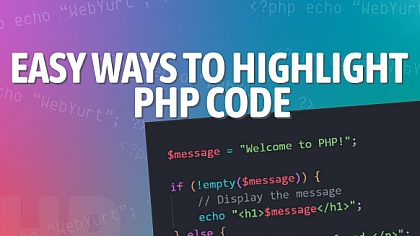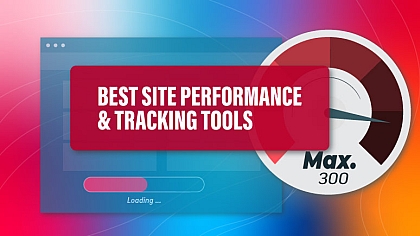
Modern Product Intellectual Property and Design Intersection
In an increasingly digitized world, the intersection between intellectual property (IP) and design becomes ever more pivotal. This crucial juncture is both intricate and critical to the creation and protection of modern products. For web designers, understanding the crucial role of IP rights concerning their professional sphere can safeguard their creative expressions and simultaneously accelerate professional growth.
Connection Between IP and Design
Intellectual property pertains to original works conceived from human intellect, including inventions, artistic designs, trademarks, and commercial names. They are essentially the exclusive rights granted to creators over their inventions. Crucially, they make a foundation that enables creators to protect and benefit from their endeavours.
Design, on the other hand, is the manifestation of a creative process. The output can be an entirely new concept, an innovative product, or an aesthetically appealing facelift to an existing product.
The Impact of Modern Technology on Web Design IP
Modern technology changes the intellectual property aspects of web design significantly because it often accelerates the speed of innovation. With a broad array of tools, platforms, and resources, the creation of web designs has become a much more efficient process. However, this acceleration also poses challenges in protecting the originality of a design. With web design ideas readily accessible to anyone online, the risk of plagiarism and imitation has increased, posing challenges for the creators of original design elements.
For example, graphic components of a webpage, unique interface elements, and particular colour schemes may be replicated by other web designers, infringing on the original designer's IP rights. In certain instances, entire layouts or website structures might be copied. As technology facilitates easier access to designs online, more sophisticated measures to trace, detect, and handle such infringements become paramount.
The Importance of IP in Web Design
Web design involves creating unique visuals, layouts, and interfaces that provide a distinctive identity to a website. This creativity and originality reflect the efforts of web designers or agencies, which should be dutifully protected. Asserting IP rights over website designs prevents unauthorized copying or use, thus preserving the uniqueness of the website and maintaining a competitive edge in the market.
Furthermore, it encourages a culture of innovation and creativity, stimulating designers to continuously evolve their design strategies. From logos, graphics, and text to the website's overall layout, protection through design rights, trademarks, or copyrights gives designers the legal assurance that their innovative contributions won't be exploited without their consent.
Filing a Lawsuit: How Can a Web Designer Protect Their IP Rights?
Intellectual property (IP) infringement is a substantial risk that designers face in their professional journey. In circumstances of design theft or unlawful usage, a designer may need to file a lawsuit to assert and enforce their IP rights.
The process is as follows:
- Identify Infringement: The first step is to identify that infringement has occurred. This involves documenting evidence of your original design and the infringing design.
- Seek legal counsel: It's critical to seek legal counsel, as intellectual property laws can be complex. A law expert can help you navigate this tricky situation and shed some light on what you might expect from the proceedings and how things could shape up.
- Cease and desist letter: Normally, the first formal step, a cease and desist letter, is commonly used to warn the infringing party to halt their activities.
- Letter of intent to sue: If the cease and desist letter does not bring the expected outcome, a letter of intent to sue may be sent. The letter includes an explanation of your legal rights, specifics of the infringement, and conditions under which you would agree not to file a lawsuit, such as requiring the other party to cease the infringing action and potentially pay damages. Issuing a letter of intent to sue can also demonstrate to the courts that you have made earnest efforts to resolve the dispute before resorting to legal proceedings.
- Filing the lawsuit: If the infringing party doesn't meet the demands or negotiate, you may proceed to file the lawsuit. Document preparations, court filings, and the involvement of the court follow.
Navigating Legalities: Tips for Web Designers
The ever-evolving digital landscape adds layers of complexity for web designers willing to protect their IP rights. Here are five tips on how web designers can safeguard themselves legally and ensure their design rights are respected:
- Stay informed: Designers should keep themselves updated with the latest IP laws and regulations, specifically related to the digital and web design space.
- Proactively register designs: Registering a design grants legal rights to the creator, reinforcing protection against unauthorized use.
- Document your design process: Maintain records documenting your design process. It can serve as valuable evidence demonstrating the originality of your design in case of a dispute.
- Use watermarked images/designs: Use a watermark, especially on online platforms, to deter unauthorized use of your designs.
- Consult a legal practitioner: If you believe your IP rights have been infringed upon, promptly consult with a lawyer specializing in intellectual property laws to explore your options and potentially take necessary legal action.
Making sense of the intersection between intellectual property and web design starts with recognizing and understanding its inherent value. As seen throughout this guide, protecting your creative rigour can be complicated, but the fruits of doing so are vast. It's about safeguarding your interests as a designer, promoting creativity, and fostering an environment where innovation is rewarded.
Now that you are armed with this knowledge and have practical tips at your fingertips, it's time to take control of your web designs and the intellectual property that they constitute.














